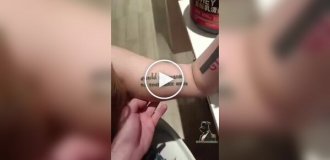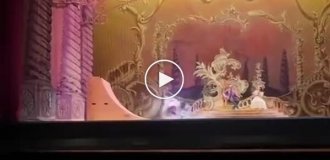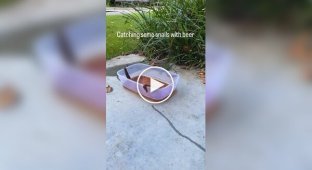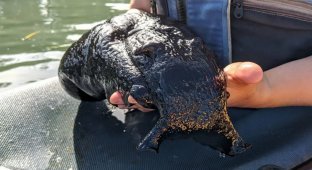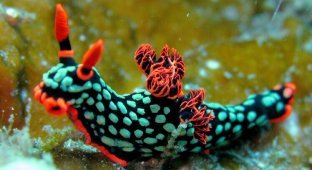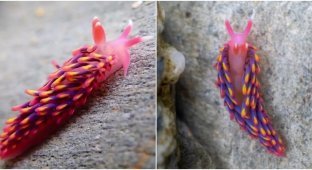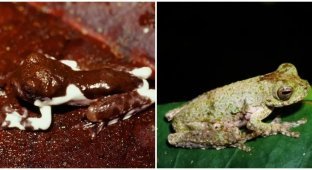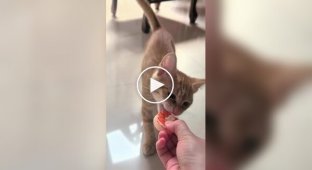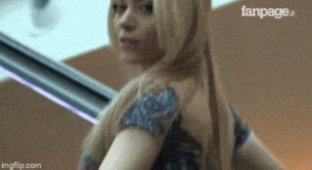The Red Triangular Slug and Its Unusual Way of Protecting Itself (4 photos)
Slugs of the species Triboniophorus graeffei, or red triangle slugs, have a unique way of protecting themselves from predators: they glue them to branches with their super-sticky mucus. This mechanism was first described in a paper on BioRxiv, where the researchers noted that instead of repelling predators, the slugs actively immobilize them. The secretion that the slugs produce for this purpose is different in composition from the regular mucus used for locomotion. 
Triboniophorus graeffei live on the east coast of Australia and are the largest representatives of gastropods on the continent, reaching a length of up to 15 cm. On the head there is one pair of tentacles (instead of the usual two). The color of the slugs varies from white to red or olive green, but all individuals are united by a characteristic red triangle on the back, due to which in English-language literature they are called "red triangle slug". These mollusks live not only in forests, but also in city gardens, and sometimes penetrate into houses, where they feed on mold. In natural conditions, their main diet consists of algae growing on eucalyptus trees. 
The habitat of slugs overlaps with the habitats of tree frogs Litoria chloris (red-eyed litoria), which hunt these mollusks. However, as studies have shown, slugs have developed an effective defense mechanism that can hold off predators for a long time.
The first recorded evidence of slugs' defensive behavior was in 2017, when researchers found an adult Litoria chloris frog stuck to a eucalyptus branch with a slug nearby. The frog tried unsuccessfully to free itself, and the scientists' attempts to help it ended with only the mucus becoming more sticky. After more than a day of observation, the amphibian was still stuck and had to be carefully freed with tools. 
That same frog, on the right is a slug
Researchers studied the super-sticky secretion of slugs and found that it is secreted by a special gland on the back. This mucus has a thicker and stickier consistency compared to the usual mucus secreted during movement. Interestingly, upon contact with water, the superglue became even more active. During the experiments, it was noted that with prolonged stimulation, slugs secrete a reddish secretion, similar to that left on the skin of a glued frog.
According to scientists, this defense strategy allows slugs to effectively resist predators by immobilizing them for a long time. In the wild, a glued frog can die from dehydration or become prey to another predator. At the same time, the slugs' protective mucus retains its properties due to the secretion of the amphibian's glands, which reactivates it.
These observations open up new horizons for studying the defense mechanisms of mollusks and their interactions with other representatives of ecosystems. 





